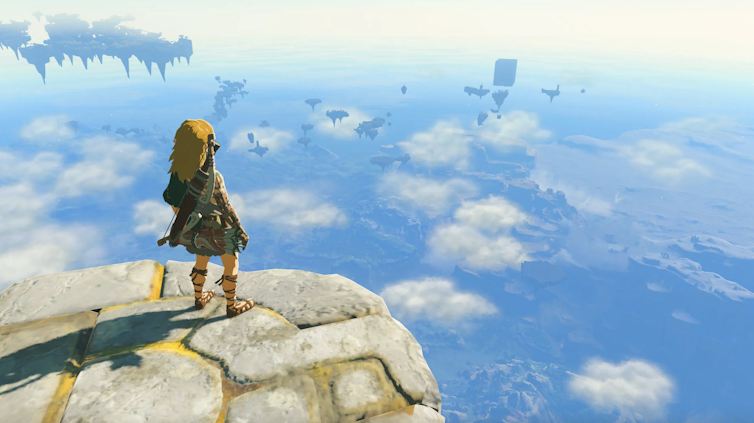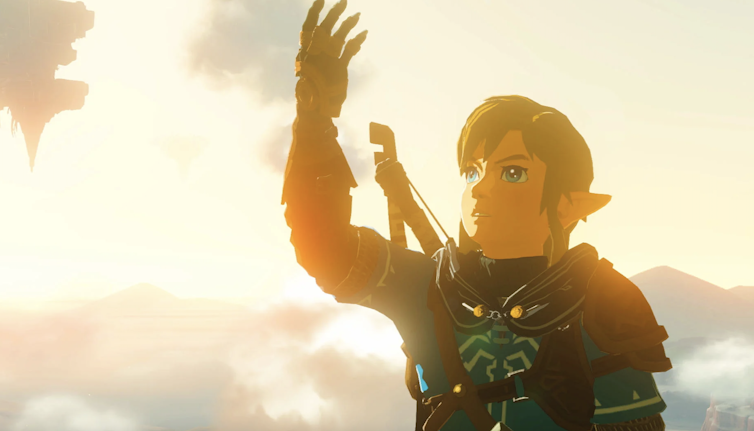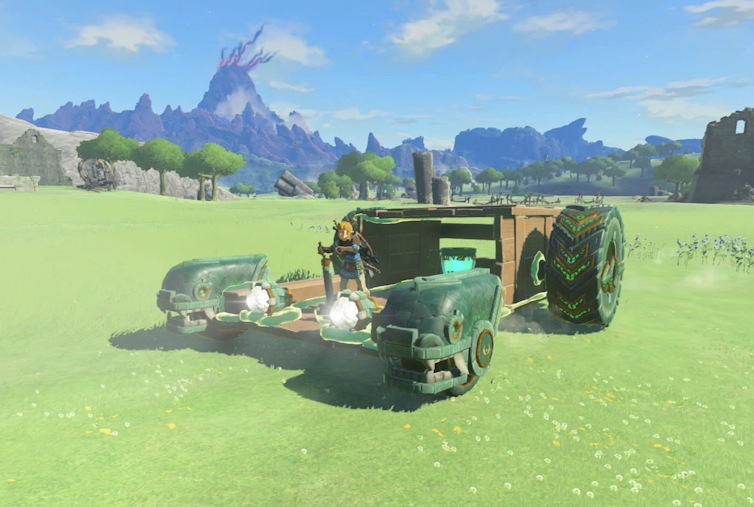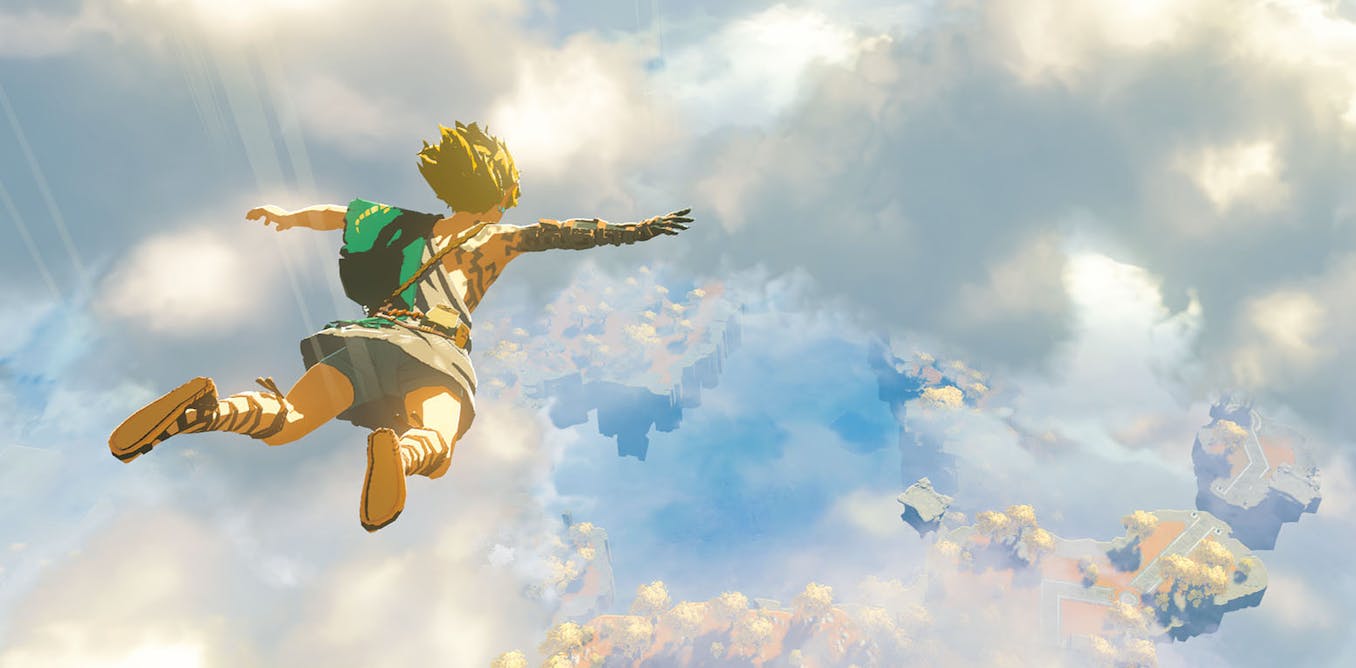Exploration and discovery have been key to Nintendo’s Legend of Zelda series since the first game in 1986 and its latest outing, Tears of the Kingdom, builds on the lessons of the past.
Much like its 2017 predecessor, Breath of the Wild, the new game is an open-world sandbox action adventure title, in which players can traverse the entirety of the game’s landscape with relatively few limitations. Protagonist Link once again sets out into the kingdom of Hyrule to find the missing Princess Zelda.
Encouraging exploration in open-world games is a common challenge in game design. Designers must evoke sufficient uncertainty for players in order to encourage their curiosity. Curiosity invites engagement, motivating players to explore and progress through a game.
Nintendo ran into this challenge while developing the vast open world of Breath of the Wild. During testing, players tended to travel from quest marker to quest marker with little deviation to explore the environment around them.
Their solution was to create a world which varied in height. As hills, mountains and towers obscure the player’s view, they are encouraged to climb or navigate them. Doing this gradually reveals what Nintendo calls objects of “gravity” – interesting and exciting locations that draw the eye and invite exploration.

Courtesy of Nintendo
Tears of the Kingdom elevates its predecessor’s approach, providing a vast world filled with peculiarities and oddities that inspire curiosity. There are “SkyView towers” that take the varying height approach even further, launching Link far into the clouds above to give players an extensive – if terrifying – view of Hyrule’s landscape.
The new “sky islands” scattered above Hyrule provide players with even more vantage points. From these heights, the delights of the world below are revealed with new wonders to investigate.
Encouraging curiosity
Tears of the Kingdom’s quests deliberately shove players off the beaten path. There are minimal objective markers in the game, with Link instead frequently given vague directions to his goal.
When I played the game, I took a brief respite from adventuring at a restaurant for Goron (a huge rock-eating species), drawn in by a giant, glowing ham joint. There, I discovered the concerning story of a new rock-based cuisine which was having a strange hypnotic effect on diners.
I was told that its origin lay in a cave “just past the mine cart tracks”. My search led to the discovery of a new shrine (one of many puzzles) and a nearby SkyView tower before I found my objective.

Courtesy of Nintendo
Interactions like this emphasise the ambiguity of game’s story line, which is threaded with mysteries and uncertainties that again invoke curiosity. The game opens with the excavation of an ancient structure beneath Hyrule, complete with foreboding carvings and a strange red mist. These elements all hint ambiguously at the events to come.
Tears of the Kingdom doesn’t hand hold, with the narrative full of abstract and surreal moments that keep players guessing. Many familiar faces return, but time has passed since players have last seen them and they have changed. Players are left to fill in the gaps themselves.
Link’s new abilities
Link’s new skills are Tears of the Kingdom’s greatest evolution from Breath of the Wild. Though players already had the power to manipulate certain metal objects in the world, Tears of the Kingdom broadens this significantly.
Anything not glued down is now fair game and the glue is in players’ hands. Objects and more complex mechanical devices can now be stuck together into increasingly intricate creations to traverse, solve puzzles, or fight enemies with.
The same can be done with weapons and items in the inventory. I was able to fuse an entire log to the end of my sword and club baddies away with ease. I also glued a dismembered bat eye to the end of an arrow, to give it homing properties.

Courtesy of Nintendo
This ability to create and manipulate the world to such a degree opens a huge range of possibilities to explore. Can I attach a bomb to an arrow? Absolutely, this works incredibly well. Can I attach a bomb to my sword? Absolutely, but good luck with that.
The Legend of Zelda has always excelled in giving players a true sense of adventure and over the decades the franchise has become a mainstay of the action adventure genre. While creating uncertainty and evoking curiosity is fundamental for many game designers, Tears of the Kingdom is truly Nintendo’s masterclass.




